calsfoundation@cals.org
Christ Church Parochial and Industrial School
Christ Church Parochial and Industrial School was a private school for African-American children operated in Forrest City (St. Francis County) by the Episcopal Diocese of Arkansas from 1923 until 1968. It was closely related to Christ Church Mission, an African-American congregation founded in 1921. The mission and school were founded by the Right Reverend Edward T. Demby, the African-American suffragan (assistant) bishop for “Colored Work” in the Diocese of Arkansas and in the southwestern province of the national Episcopal Church.
Bishop Demby sought to build a thriving African-American ministry in eastern Arkansas and also saw the need for quality education in academic and vocational skills for the black children of Forrest City and the surrounding county. He requested and received funds from the Women’s Auxiliary of the Diocese of Pennsylvania to build a chapel. Demby brought a black priest to Arkansas, the Rev. James Henry King, who was knowledgeable about being a mission priest and had long experience being a pupil in and administering a parochial and industrial school. King was admitted as a priest in Arkansas in January 1922.
King served the congregation of the mission and was principal of the school for over thirty years. King formed a school that trained children in maintenance skills and in domestic science, as well as teaching the curriculum expected in public schools. The school was known as Father King’s School until he died in 1955. He was an enthusiastic fundraiser and used local resources to help finance the school. The children paid a small tuition, but he often accepted items of produce and other bartered items as payment for the day school. The rugs made in the school workshop were sold throughout the nation.
King’s wife, Nina Pearl Fields King, taught domestic science. She taught many families in the community how to preserve the food they grew in the summer. After getting the Episcopal Church Women (ECW) to donate a community pressure cooker, she accepted canned vegetables in return for the use of the cooker. She used this food for a school lunch program long before the public schools provided lunches
The original church building and school building were located on Cherry Street in Forrest City. When the school building burned in 1957, two Forrest City families donated five acres of land in the southwestern part of the city for new facilities on Ophelia Street. Two new school buildings were dedicated on November 1, 1959. One new building was dedicated in memory of Bishop Demby, and the other school building was in memory of Father King. A new church building was constructed on the campus and consecrated by the Rt. Rev. Robert R. Brown in 1962.
After Father King’s death, Alonzo Turner became the principal, and he was followed by Edward Norman. In the mid-1960s, a man who was educated at the school, the Rev. Emery Washington, became its last headmaster.
Christ Church School began with grades one through eight and later grew to a school with twelve grades and kindergarten. Toward the end of the life of the school, the Diocese of Arkansas paid teachers’ salaries, but continued to pay only a small part of the expenses. In 1967, the diocese’s annual convention voted to cut the school back to grades one through six. By that time, the slow implementation of the integration of Arkansas public schools had started in St. Francis County. High school students could then attend integrated public schools.
By 1968, the cost of operating the school to stay in compliance with state requirements had become prohibitive. Although Christ Church School was usually filled to capacity with a waiting list, it lacked the funds to be a viable operation. The 1968 annual convention of the diocese voted to close the school.
After the parochial school closed, Emery Washington and the mission congregation used the buildings for a number of community outreach activities, including a preschool program that operated for several years. Summer meal programs produced as many as 500 meals per day. Adult education classes and tutoring took place in one of the school buildings, which was known as the J. H. King Center in the 1990s. It was also rented out to the community for such uses as fraternity and sorority meetings, meetings of the National Association for the Advancement of Colored People (NAACP), Eastern Star and Masonic group meetings, and wedding receptions. Although the building is in need of repair, it is still used as a polling place.
For additional information:
Beary, Michael J. Black Bishop: Edward T. Demby and the Struggle for Racial Equality in the Episcopal Church. Urbana: University of Illinois Press, 2001.
McDonald, Margaret Simms. White Already to Harvest: The Episcopal Church in Arkansas, 1838–1971. Sewanee, TN: University Press of Sewanee, 1975.
Mary Janet “Bean” Murray
Little Rock, Arkansas
 Early Twentieth Century, 1901 through 1940
Early Twentieth Century, 1901 through 1940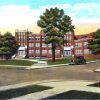 Education, Elementary and Secondary
Education, Elementary and Secondary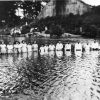 Religion
Religion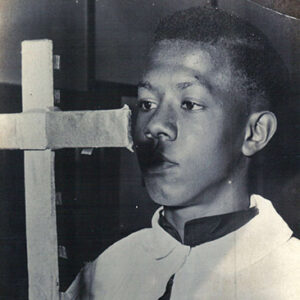 Christ Church Crucifier
Christ Church Crucifier  Christ Church Parochial and Industrial School
Christ Church Parochial and Industrial School 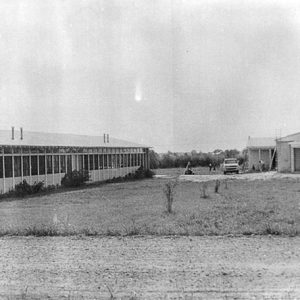 Christ Church Parochial School Buildings
Christ Church Parochial School Buildings 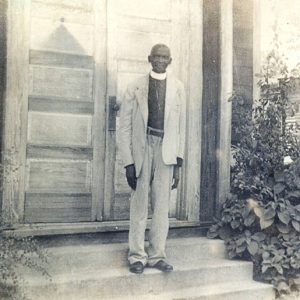 Rev. J. H. King
Rev. J. H. King 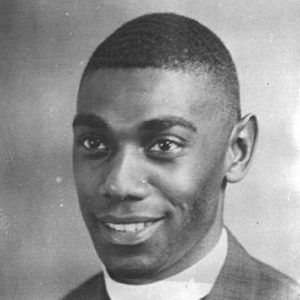 Rev. Emery Washington
Rev. Emery Washington 




I attended kindergarten at Christ Church in 1964 or ’65. Our principal was a tall black lady who always had a smile and was a very kind person from what I remember of her. I lived down the street from the school on Church Street. I remember a white lady singing to us at the school and playing guitar. So much Christian teaching I remember… I believe it helped to prepare my life for its journey in this world. Thank you, Christ Church School.
Thank you, Bean Murray, for producing and sharing this amazing racial and religious history about eastern Arkansas. I look forward to reading more about this school and the work of the Episcopal Church’s work in other Arkansas minority communities!